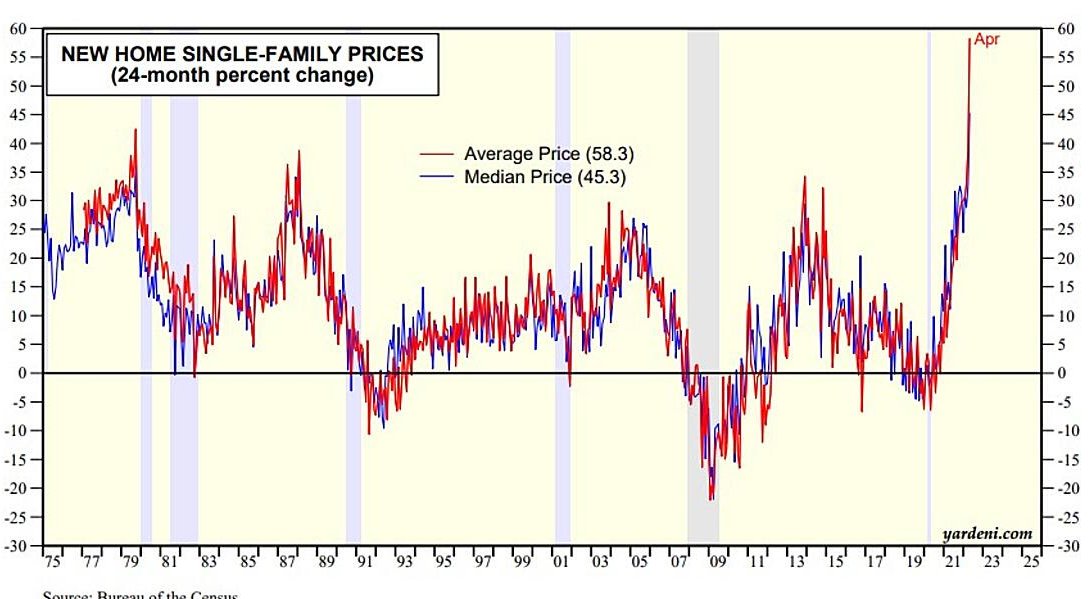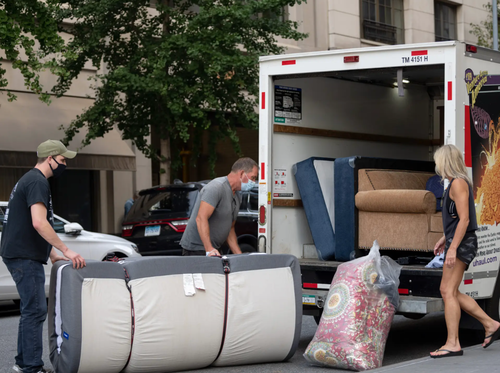It was like they had never left.
The first post-pandemic edition The Real Deal’s New York City Showcase + Forum packed the Metropolitan Pavilion with real estate pros for an afternoon of panels, networking and dealmaking. The annual gathering had been on hold for the pandemic, but attendees seemed to make up for lost time as they buzzed through the venue, catching up with old acquaintances and making new ones.
Some 43 booths snaked around the convention hall as vendors showcased the future of real estate. StreetEasy and Miele brewed cappuccino, while others hawked swag ranging from notebooks to hand-rolled cigars. Cardboard cutouts of real estate titans Harry Macklowe, Stephen Ross and Gary Barnett posed with a poster for TRD’s forthcoming book, The New Kings of New York.
VIPs mingled in the Thermador green room as a series of panels convened the biggest names in residential development, commercial real estate and proptech. Here are the highlights:
Sell, sell, sell
Bess Freedman made no bones about it: The Brown Harris Stevens CEO thinks reality television shows like “Selling Sunset” are bad for residential brokerages.
“It makes the consumer think all you have to do is look cute, have a fancy car and boom — you can do a deal,” Freedman said.
Co-panelist Ryan Serhant, the “Million Dollar Listing” star, begged to differ.
His eponymous firm makes a personality-focused pitch to agents, encouraging them to develop internet followings with high-production videos.
“To give those agents the resources to build their own brands so they can generate leads in their sleep,” Serhant told the audience, “I wanted to create a platform where they could do that.”
Douglas Elliman CEO Scott Durkin took aim at the city itself. “Clean up the damn city,” he said. “It’s kind of dirty and filthy and full of garbage.”
All three panelists found a common rival: Compass. The techy brokerage has poached top agents from its competitors, but its share price has fallen by more than 70 percent since Compass went public last April.
“A lot of people went to the other side and they realized there isn’t much there,” Durkin said. “A lot of people are turning around and coming back.”
The mayor’s red carpet
In the event’s keynote address, Mayor Eric Adams encouraged New York business leaders to “stop being ashamed of being a capitalist,” although it’s not clear any ever were. In particular, he touted the importance of real estate to the city’s economy.
“What oil is to Texas, real estate is to New York,” Adams said in one of several applause lines. “We have to support our police,” was another.
The mayor, whose pro-business platform brought him widespread support from real estate, said he wants to “roll out the red carpet” for builders. That plan would include further modernizing the Department of Buildings and cutting through bureaucracy that delays construction.
Adams didn’t touch on the 421a property tax break, which Albany is poised to let expire on June 15. Without the incentive, multifamily rental projects are expected to stop. After his speech, Adams told TRD’s Kathryn Brenzel that he hopes state lawmakers will “at least” extend the program.
The mayor is expected to release his own housing plan soon. He also encouraged companies to bring their employees back into the office, joking that many people who say they are still afraid of catching Covid at the office are the same ones partying at clubs on the weekend.
Disrupt or die
A panel of proptech titans had a bold message for the audience: get with the times or step aside.
“You don’t want to be on the wrong side of what I think is an inevitable and very powerful push forward,” said Era Ventures’ Clelia Warburg Peters.
As the panelists discussed what they consider the real estate industry’s biggest transformation in centuries, they focused on the challenges forcing owners and investors to dive into the digital age. Changing consumer behaviors and the push for a net-zero carbon economy aren’t just trends, but lasting changes that require wholly new approaches.
“To adapt to a changing environment, to adapt to changing consumer needs, to adapt to a changing climate — these are elements you didn’t have to deal with before, or at least they weren’t at the top of the list,” said Brad Greiwe, co-founder and partner at Fifth Wall.
As they discussed such lofty goals, the panelists dismissed concerns that setbacks in tech valuations signal trouble for proptech as a whole.
Some old-school segments of the industry will likely change as new tech changes what is possible without (as many) humans. The brokerage business is already under threat from iBuyers, which cut out intermediaries the way Tesla cuts out dealerships.
“I don’t think agents will be totally disintermediated,” Peters said. “But I think there is a legitimate question about whether brokerages will be.”
Office forecast
There are plenty of reasons for office and retail landlords to worry, but it wasn’t all doom and gloom at a panel on the future of commercial real estate. Chris Shlank, founder and managing partner of Savanna Fund, joined Will Silverman of Eastdil Secured and Bob Knakal of JLL Capital Markets to talk about the changing world of offices in New York.
The group agreed that some amount of office-to-residential conversions will make sense, but it will not be the silver bullet that some housing activists envision because the building code for homes is so different. Some aging offices could become something else, though.
“The bottom 20 [percent] is going to be ripe for alternative use,” said Shlank. “It’s going to be the middle 60 that I think about and I worry about.”
Conversions would require rezoning and complicated renovations. One idea popular with the panelists was a reinstituted 421-g program — a tax incentive to help conversions pencil out.
“Without that tax abatement the numbers are really, really hard to work,” Knakal said.
The group also discussed what Silverman calls the “downsize upgrade,” where lessees grab less but nicer space than they currently have. These moves have become particularly popular near Grand Central, which bodes well for SL Green’s One Vanderbilt.
With staff commuting in for only part of the week and less willing to switch trains, the focus is less on ping-pong tables and meditation rooms and more on quality and transit-hub proximity.
“In four years, all of us owners and advisers are going to laugh at each other at how much money we spent on amenities that no one uses,” Shlank said.
Building the skyline
Several of New York’s most accomplished developers addressed the audience at the May 19 event.
Gary Barnett, the founder and president of Extell Development, joined TRD’s publisher Amir Korangy to dish on tenant holdouts, foreign buyers, rising rents and the risks of developing in the city.
The conversation opened with some humility, as the billionaire builder admitted discounting his luxury units early in the pandemic.
“When Covid hit everything, we cut pricing across the board. But since the beginning of 2021, we’re seeing a tremendous pickup in the market,” Barnett said.
While rents have soared, Barnett disputes that they are out of control.
“Saying rents went up 30 percent is totally inaccurate,” Barnett said. “All it did was stabilize back to normal.”
Developers have more to worry about than dramatic statistics. Barnett touched on holdout tenants, a problem that has bedeviled him and his competitor Miki Naftali , CEO of the Naftali Group.
As lawyers have wrung huge settlements for project-blocking clients, Barnett said government bureaucracy and the court system have moved too slowly to protect developers’ rights. A tenant lawyer’s quest for a windfall also means slower housing construction and higher costs.
“He may get a great deal for a client, but is that good for society?” said Barnett, touting the tax revenue from his projects.
Later in the afternoon, Naftali and BRP Companies co-founder and CEO Meredith Marshall spoke with TRD’s Editor-in-Chief Stuart Elliott about the challenges facing development in the city.
A major cause for concern was the likely expiration of the 421a tax break, which Marshall called “malpractice.”
Naftali said 470 Kent Avenue, his firm’s Williamsburg development site , would illustrate the effect of 421a’s demise. The firm planned to set aside a large block of rentals as affordable, but without the tax break, Naftali will sell all the units as condos.
“What choice do we have?” Naftali said. “We’re going to sell them; we’re going to make money. How does that help anybody?”
Marshall warned that construction workers would depart for cities with more active pipelines. “Able-bodied workers are not going to hang around,” he said.
https://therealdeal.com/2022/05/24/real-estates-titans-talk-building-selling-and-reinventing-the-city/

 Between 2012 and 2021, DFW outpaced 50 other major U.S. metros in terms of combined new construction across all major real estate sectors, StorageCafe’s analysis found. In total, the Metroplex saw more than 556,000 permits issued for residential construction and close to 331M SF of new industrial, office and retail space.
Between 2012 and 2021, DFW outpaced 50 other major U.S. metros in terms of combined new construction across all major real estate sectors, StorageCafe’s analysis found. In total, the Metroplex saw more than 556,000 permits issued for residential construction and close to 331M SF of new industrial, office and retail space.